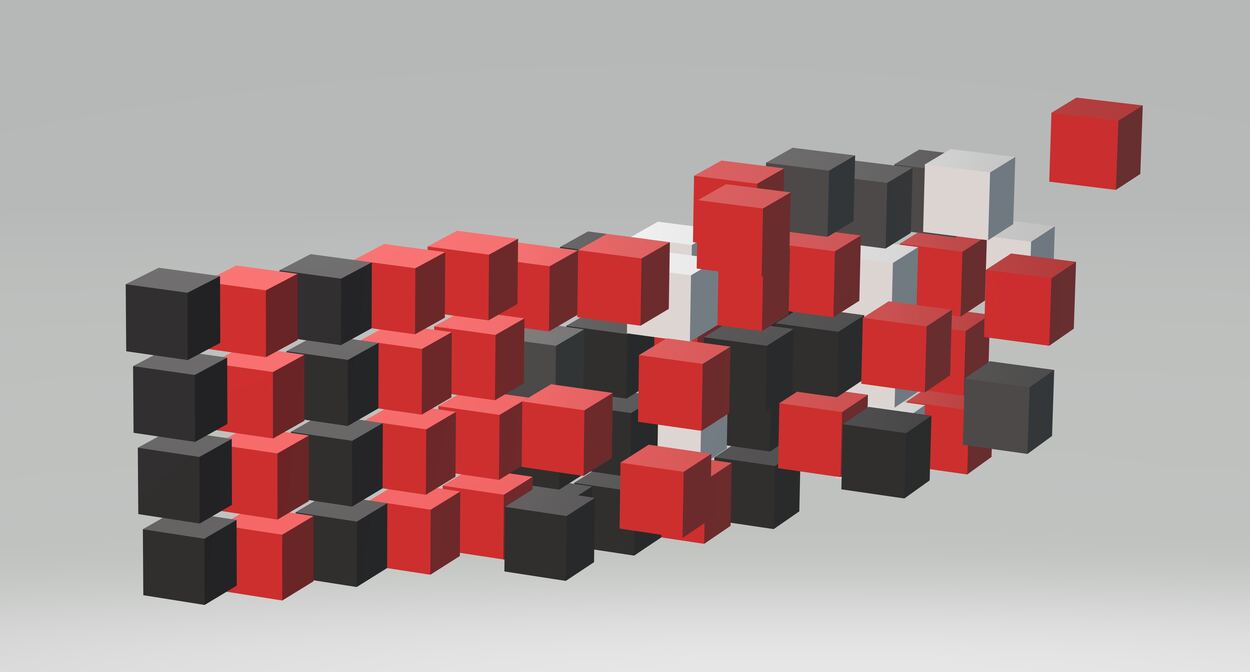Introduction
Ever heard of iPaaS? Chances are, you know it by one of its other aliases: integration-platform-as-a-service or integration platform. But what is it, and why should you care?
In short, iPaaS is a type of cloud computing service for setting up integrations between different software applications.
It's becoming increasingly popular as enterprises look for ways to streamline and automate their data flow processes.
The newest development in iPaaS technology is vertical iPaaS, which serves to simplify the process even further.
In this article, we'll explore what makes vertical iPaaS different from its traditional counterpart, the benefits it offers, and how you can make the most out of this new technology.
What Is iPaaS and Why Do Businesses Need It?

Do you want to keep up with the competition in today's ever-changing, digital world? Then you need to integrate your processes and applications— that's where iPaaS comes in!
iPaaS (Integration Platform as a Service) is an innovative cloud-based platform that helps businesses connect, orchestrate and manage different software applications, databases or services.
This makes it easier for organizations to leverage data from multiple sources and create automated workflows.
Using iPaaS, businesses can create secure and reliable integrations without sacrificing speed or efficiency.
It also helps reduce development time by providing a suite of pre-built integrations, connectors, templates and coding tools.
Moreover, it’s designed to scale as your organization grows, making it easy for you to rapidly innovate without having to re-architect or re-build your infrastructure.
In other words, iPaaS makes it easier for businesses of all sizes—from startups to large enterprises—to quickly tap into the digital opportunities of today’s world.
With robust and cost-effective integration capabilities at their fingertips, organizations can revolutionize the way they work and drive growth more efficiently than ever before!
The Rise of Vertical iPaaS Solutions
As the concept of Integration as a Service (IaaS) continues to gain traction in businesses of all sizes, there's been a shift towards the development of highly specialized vertical solutions.
This movement towards vertical iPaaS solutions is transforming industry-specific operations, tailored technologies, and long-term customer relationships.
Vertical iPaaS solutions are designed to provide organizations with an easier and cost-effective way to integrate complex data flows across their individual applications and systems.
By leveraging purpose-built applications, businesses are able to quickly streamline their processes and make better use of their time, resources, and money.
Some of the most promising benefits of vertical iPaaS solutions include greater automation, improved data insights, increased security and compliance standards, better customer service levels and faster time to market.
As companies continue to realize the power of integration as a service, more industries are turning towards these specialized solutions—developing cutting edge technology that can help push their business operations into the future.
iPaaS Use Cases Across Industries
If you've heard of iPaaS, you might be wondering: what can it do? The answer is, iPaaS can do A LOT!
Vertical iPaaS use cases span multiple industries, from healthcare to retail and more.
Let's look at a few examples:
Healthcare
In healthcare, integration solutions are needed to make sure patient records are stored safely and securely.
With vertical iPaaS, healthcare organizations can easily integrate data from various sources—like Electronic Medical Records (EMRs), Patient Health Records (PHRs) and lab test results—for improved data accessibility and collaboration between providers.
This helps keep patient records up-to-date and accurate, so patients get the best care possible.
Retail
Retailers deal with a lot of data from multiple sources as well.
If a customer interacts with your brand as both an online buyer and in-store shopper, vertical iPaaS enables you to unify customer information across channels for a better picture of your customers’ behavior.
This helps retail businesses analyze trends in customer service data and product returns, so they can improve their services accordingly.
These are just two examples of how vertical iPaaS is changing the way businesses operate across different industries.
With its cloud-based scalability, it provides organizations with the agility they need to quickly adapt to changing market conditions while reducing costs by streamlining integration processes.
The Benefits of Vertical iPaaS

When it comes to getting the most out of your integration, using a Vertical iPaaS can offer several distinct advantages.
Here are some of the top benefits it offers:
Increased Security & Performance
Vertical iPaaS is designed to provide greater security and performance than traditional integration solutions. Because of the specialized nature of these services, you can be sure that your data is more secure and reliable than ever before.
This makes Vertical iPaaS the ideal option for organizations that need to protect sensitive information while also benefiting from increased performance and scalability in their integrations.
Improved Ease of Use
Another benefit of Vertical iPaaS is its user-friendly interface.
Since it's tailored for specific industries, the software will be simpler to use and understand, allowing users to quickly process data or access information that's relevant to their business operations.
This makes it easier and faster for organizations to access the insights they need without having to learn complicated programming languages or techniques.
Cost Savings
By leveraging Vertical iPaaS, businesses are able to save money in several ways.
First, they can cut down on IT costs because they're not paying for maintenance and upkeep since the service provider handles all that.
Additionally, since businesses can pay on a per-use basis, they're only paying for what they need when they need it—which can be significantly less expensive than buying an entire suite of integration solutions up front.
How to Evaluate an iPaaS Platform

When considering an integration as a service (iPaaS) platform, there are a few key criteria to evaluate.
It's important to understand the capabilities and limitations of the platform you're researching, ensuring that it meets your specific needs. Here are a few things to consider when evaluating iPaaS platforms:
Hosting Options
The iPaaS hosting environment will depend on how much control you want over your workflow, security, and other factors.
Depending on the provider, you may be able to operate in a public cloud (AWS/GCP/Azure/etc.), private cloud or on-premises setup.
Scalability
Evaluate the platform's scalability capabilities.
In other words, can it grow and scale to meet your organization's future needs?
Does it offer automated scalability or does it need manual intervention?
Security
Security is obviously paramount when evaluating an iPaaS platform.
Make sure that the data is encrypted end-to-end between the device and the cloud instance where your application will be hosted.
Additionally, look into user roles and account management, as well as data filtering capabilities.
Data Interfaces
Make sure that the platform you choose supports all of your data sources—whether they're web services, databases or existing third-party applications—and provides powerful data manipulation tools such as transformations so you can modify data before passing it into cloud applications.
Additionally, make sure it supports popular formats like JSON and XML for both inbound and outbound integration with [cloud applications] or APIs.
Finally, keep in mind that aside from technical performance capabilities, evaluating customer support can go a long way towards making
5 Trends That are Changing the Face of iPaaS

What might the future of iPaaS look like? Well, the possibilities are exciting!
The first trend is automation.
One of the most important trends in iPaaS is automation.
Automation will lead to faster integration and better results, but it's already widely used in other areas of IT so it makes sense for iPaaS as well.
APIs are a key part of automation because they can be used to automate tasks with minimal human intervention by using preconfigured scripts or other automated processes built on top of APIs that have been written specifically for this purpose.
While automation can be helpful, it also presents a challenge for organizations because it means that they have to keep up with the latest technologies and developments.
Developers have to learn new languages or frameworks in order to build APIs and then create applications on top of them that enable automation.
This is especially challenging when you consider that most enterprises are not using iPaaS as part of their enterprise-wide strategy at all—yet.
The second trend is microservices.
A microservice is a small, autonomous piece of code that can be developed and deployed independently.
It's like a Lego block; you can build bigger things with them by connecting them together in different ways.
Microservices are used to build scalable and reliable applications that can be easily upgraded over time.
They're also helpful when developers want to work on different parts of the same application at once--for example, if one team wants to focus on improving user experience while another focuses on improving security features for your customers' data privacy needs (and so on).
Microservices help you build better apps because they're modular. Modularity makes it easy for developers to focus on a specific part of the application and get it done quickly--and then move on to another task.
Each microservice has its own API and database, so there's no need for your team to worry about getting all the parts working together at once.
This also means that if one microservice is having problems, your whole application won't crash because only one piece is affected by this issue.
The third trend is cloud computing.
The third trend is cloud computing.
Cloud computing is the future of integration as a service, and it will not die.
In fact, the idea that cloud computing could be replaced by some other technology or business model has already been debunked by Microsoft founder Bill Gates: "The ultimate result of cloud computing is that software becomes a utility like electricity," he said at an event in October 2015. "It's just there when you need it."
Cloud computing will not die because it offers the ultimate in flexibility and cost savings.
People want to use cloud services because they are easy to access, cost effective and can be tailored to your needs.
The trend of cloud computing is here to stay, and it will only continue to grow stronger as more businesses realize its benefits.
The fourth trend is SaaS and Iaas.
The fourth trend is SaaS and Iaas. Both SaaS and Iaas are important in the future of integration as a service, and they're also important in the future of iPaaS.
For example, if you're using a cloud-based application like Salesforce or Workday that integrates with other applications through APIs (which means it uses an API to connect), then those APIs need to be available for your enterprise customers who may not have their own environments set up yet but still want access to these applications from their own devices or systems.
This becomes especially true when we start thinking about IoT devices such as cars or smart home appliances--people don't want their cars crashing into each other just because one car doesn't know what another car is doing all day long!
So, when we talk about the future of integration as a service, one thing that's important to know is that it won't just be about the APIs. It will also be about SaaS and Iaas.
The fifth trend is DevOps and agile development.
DevOps is a software development methodology that helps teams work together more efficiently.
DevOps is a cultural movement, not just a set of tools. It's all about collaboration and communication between the different departments involved in the development process--development, testing and operations (Dev/Test/Ops).
DevOps aims at breaking down barriers between these teams by encouraging collaboration on code changes from day one of development to deployment into production environments.
Conclusion
All in all, vertical iPaaS is set to revolutionize the world of integration as a service. It streamlines the process of integrating applications and services, simplifies the control of backend processes, and improves the efficiency and scalability of enterprise integration.
While vertical iPaaS is still in its infancy, it has the potential to revolutionize the way businesses handle their integration needs. With the increasing complexity of diverse applications and services, the future looks bright for vertical iPaaS.
Companies looking to take advantage of this technology must choose the right provider and ensure it meets their specific needs, so they can quickly and effectively start to reap the benefits.








